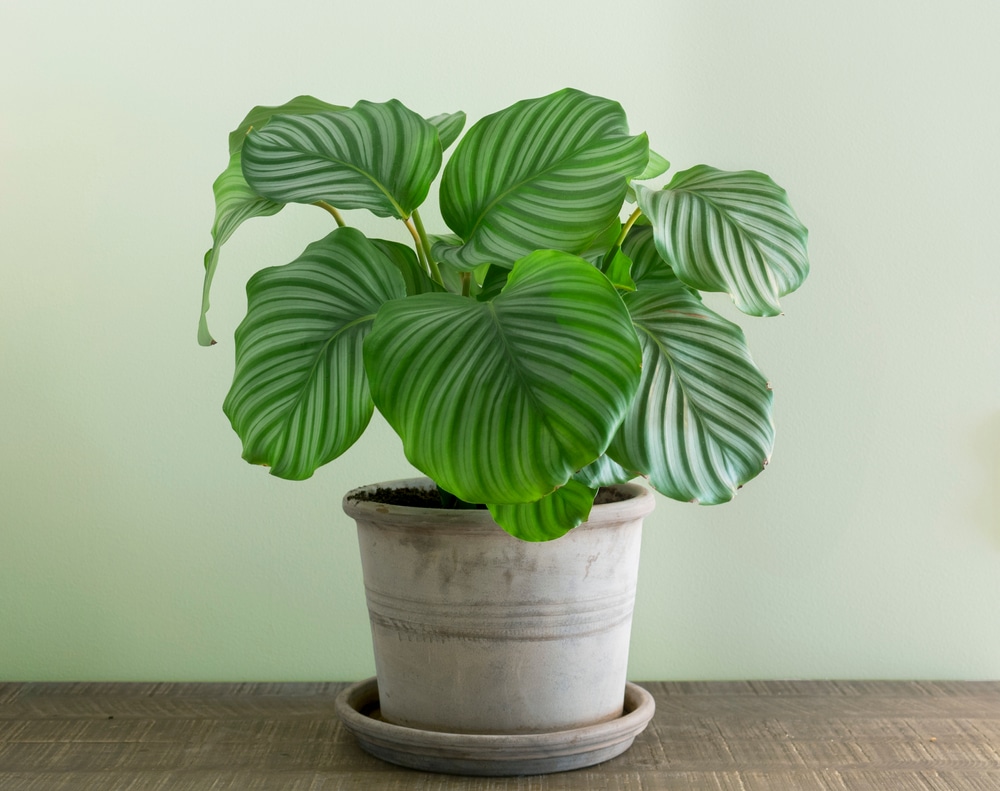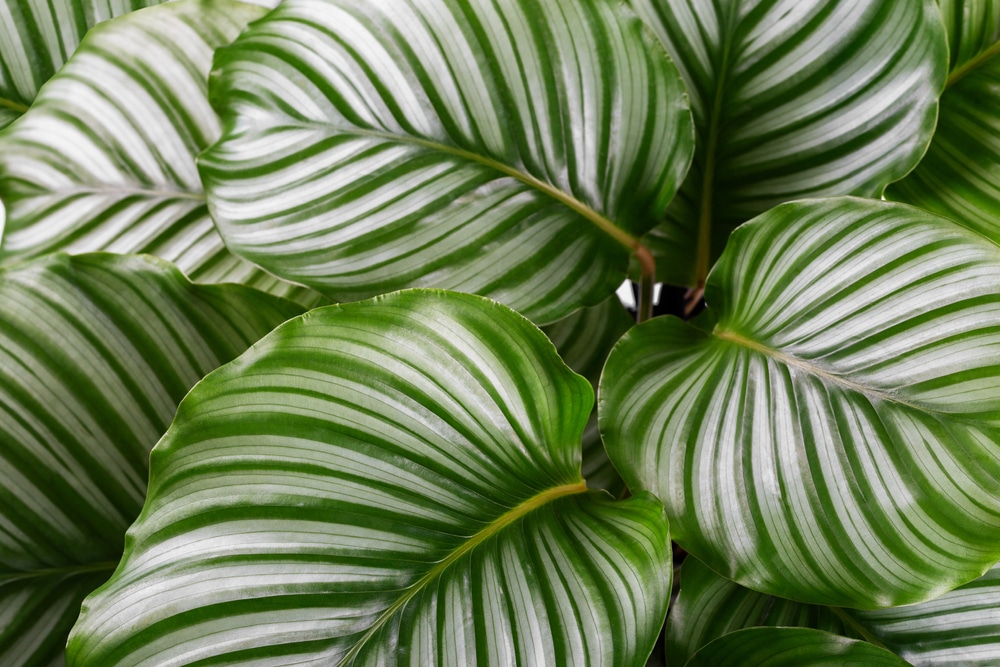Calathea orbifolia plants are highly sought-after houseplants because of the fresh green sense of beauty they add to a home. They have large, round, beautiful leaves with pale silver green markings and vein-like stripes. As such, they are bound to add dramatic interest to your selective collection of houseplants.
Moreover, these plants have air purifying qualities, which makes them a more useful option.
| Botanical Name | Calathea orbifolia |
| Common Name | Prayer plant/orbifolia prayer plant |
| Plant Type | Perennial |
| Flower Color | Small white flowers (when it grows naturally in the wild) |
| Size When Mature | 36 inches tall and 24 inches wide |
| Bloom Time | Spring |
| Sun Requirements | Full/ Partial Sun |
| USDA Hardiness Zones | USDA zone 11 to 12 |
| Soil PH Range | 6.5 |
| Soil Type | Slightly acidic, well-draining |
| Water Needs | Medium |
| Native Area | Bolivia |
Calathea orbifolia plants are sometimes considered as the diva in the entire house plant world. Surprisingly, these showy and sassy plants do not require a lot, provided you keep all the growing conditions consistent.
If you want to add calathea orbifolia freshness and beauty to your home but do not know how to care for it, this post is for you. It will cover everything you need to know about caring for thriving calathea orbifolia plants.
What you need to know about calathea orbifolia
Calathea orbifolia plants, commonly referred to as the prayer-plants or orbifolia prayer plants, are popular because of their large striking green leaves with beautiful stripes. They are native to Bolivia and proudly enjoy South America’s humid and tropical rainforest climates.
For the unacquainted, Calathea is a genus of the Neotropical rhizomatous herbaceous perennial plants that are mainly identified because of their unique patterned leaf movement. Plants in this genus move their leaves upwards at night and lower them during the day in an attempt to maximize heat absorption. This rhythmic movement contributes significantly to the most lovable attributes of the calathea orbifolia plants.
If you are looking to grow calathea orbifolia plants, the good news is that they are relatively easy to grow and nurture, only that they require a little more moisture.
In ideal conditions, calathea orbifolia plants grow moderately, reaching about 36 inches tall and 24 inches wide. Their beauty-creating leaves grow up to 12 inches wide, making them the largest prayer plant species. All in all, like most plants, these indoor plants will go dormant during the cold winter and revive in spring when the weather starts to warm.
Typically, calathea orbifolia plants are grown for their striking foliage beauty — It is pretty hard for calathea orbifolia to bloom. In contrast, when growing naturally in the wild bushes and forests, calathea orbifolia plants bloom in spring, producing clusters of small, white, star-shaped flowers.
Calathea orbifolia plants are considered non-toxic; thus, they are safe for your pets and kids.
How to care for calathea orbifolia
Here is everything you need to know about growing and caring for a thriving calathea orbifolia.
Light
Like most leafy plants, calathea orbifolia plants need plenty of light for them to thrive. They thrive best in bright indirect sunlight but can tolerate partial shade.
When grown under too much shade, their leaves fade and lose their beautiful markings.
Soil and watering
Calathea orbifolia grows best when planted in fertile potting soil that drains well. They prefer slightly acidic soil with a pH of about 6.5. For the best result, plant calathea orbifolia in potting soil with one part of perlite and one part of orchid bark. This mixture is fertile and well-draining, hence suitable for growing calathea orbifolia.
Water your plants weekly while ensuring the soil gets relatively dry between waterings. Too much water can cause fungal infections like root rot.
Temperature requirements
Temperature is one of the most basic growing requirements you should keep at a constant range. In this regard, calathea orbifolia plants thrive with temperatures ranging from 65°F to 75°F. When temperatures drop below 65°F, the plant’s leaves will likely droop. On the other hand, they will wilt or curl when the temperature is higher than 75°F.
Considering their ideal growing condition, calathea orbifolia thrives outdoors in hardiness zones 11 through 12.
When growing the calathea orbifolia plants indoors, keep them away from A/C units, radiators, drafts, heating vents, or fireplaces because they are sensitive to temperature changes. Some of the responses when exposed to excessive heat include leaf discoloration, leaf loss, and other signs of plant stress.
Fertilizer
Notably, calathea orbifolia are not heavy feeders. However, you can feed them with ¼ strength balanced all-purpose fertilizer once a month during the active spring and summer growing seasons. Avoid feeding during the dormant winter season.
To ensure your plant is always growing in a fertile mixture, consider repotting every few years.
Diseases
When grown in damp spots or overwatered, calathea orbifolia plants may suffer diseases like leaf spots, powdery mildew, and deadly root rot. To safeguard your vulnerable calathea orbifolia from infections and diseases, keep the soil moist, not damp.
Calathea orbifolia propagation
Calathea orbifolia can be easily propagated from its root divisions. Normally, these plants will develop new shoots as they grow. These new shoots can grow to become large plants when given enough care.
To propagate calathea orbifolia, take the entire plant from the pot and gently separate the shoots from the mother plant while keen not to break the delicate shoots. Plant the new shoots straight away and provide them with ideal growing conditions.


